Tanzania in June
Weather in Tanzania in June
June marks the opening of the dry season in Tanzania. Unsurprisingly, the weather in the dry season is exactly what you might expect – warm (but not hot) temperatures, low humidity, and very little, if any, precipitation. June temperatures range from 15°C to 27°C on the mainland with typically chilly mornings and evenings (pack a jacket!).
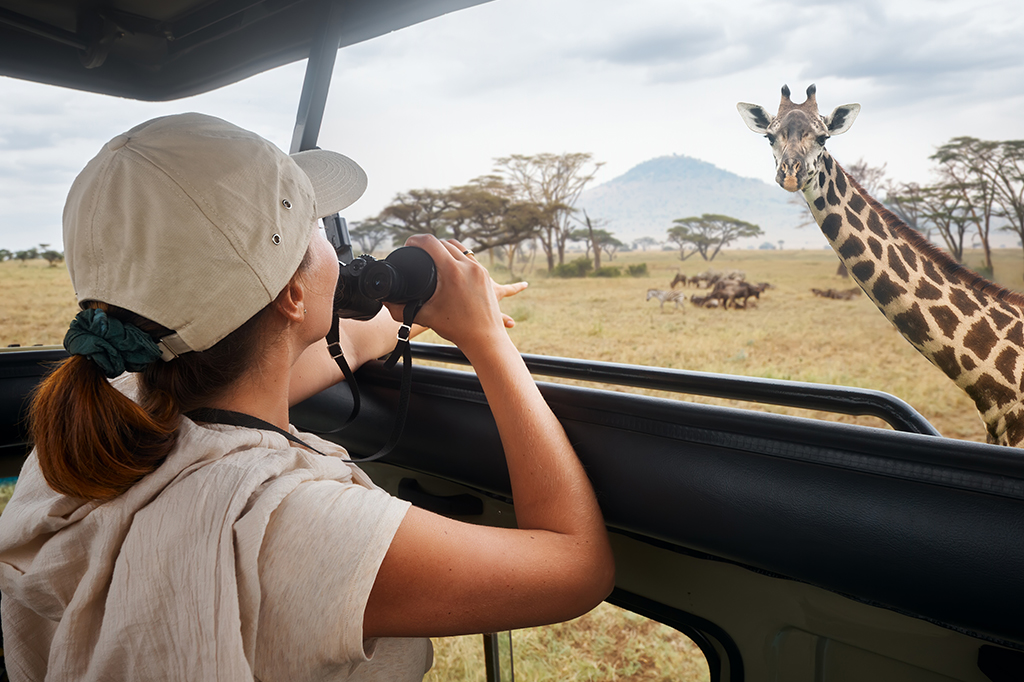

During the dry season, the landscape becomes drained of colour. The lush, verdant land of the wet season gives way to a variety of beiges and browns of the dry season. While this often allows for the best game viewing, it can sometimes get dusty, particularly when there are crowds and more game vehicles.
Lodges in Tanzania in June
Unlike April or May preceding it, June is when the crowds start to show up. Because the dry season is bereft of rain, allows for better sightings, and there is more animal density in certain areas of national parks, it is peak season for tourists on safari.

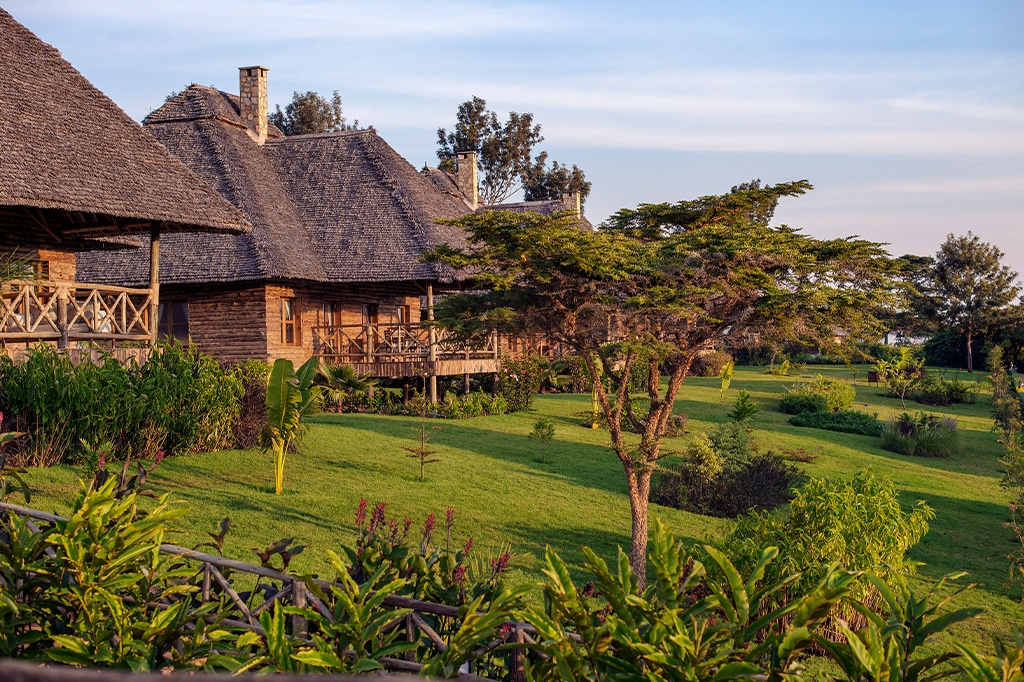
Typically, this means that accommodations will get busier faster – meaning you may not have your favourite choice available to stay at if you leave booking your trip to the last minute. Booking in advance is the best choice when it comes to travelling to Tanzania in June, so contact us to make your dream trip a reality.
Northern Tanzania Safari in June
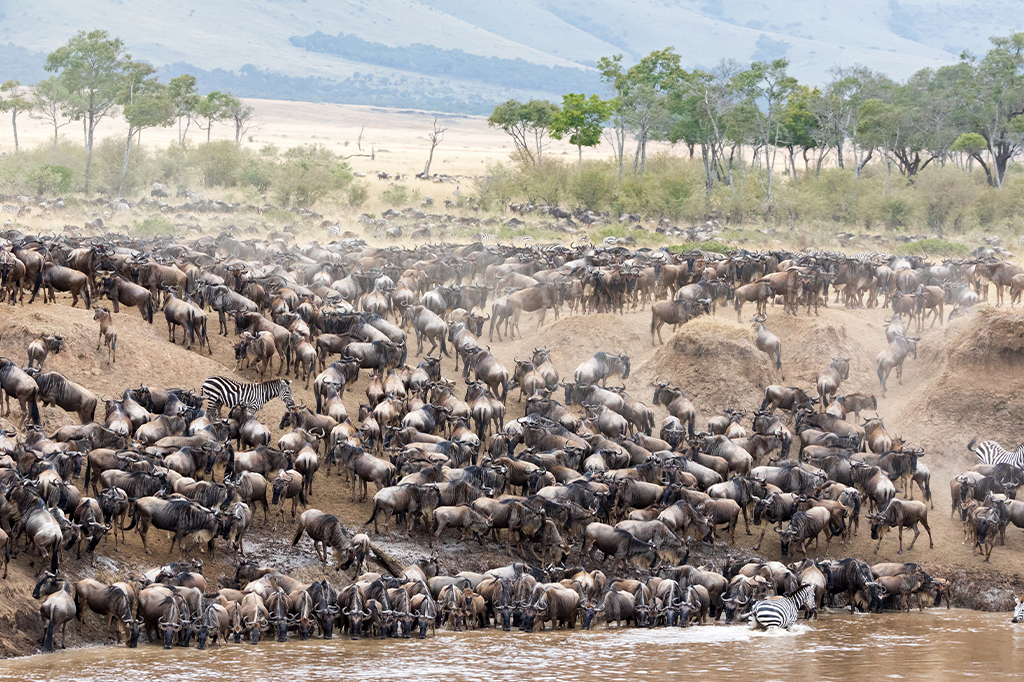

1. The Wildebeest Migration in June
June is an excellent month to witness the Great Migration. While June is still the mating season for the wildebeests, with the land becoming drier, food and water will become scarcer, meaning large groups will start congregating at watering holes or sources like the Grumeti river, which they will cross in their thousands.
Because of the relative lack of resources and the dryness of the climate, spotting the large herds is easy. However, when viewing river crossings at this time of year you may also be able to see predator action – crocodiles lay in wait for the wildebeest crossing to pick off the stragglers.
2. Climbing mount Kilimanjaro in June
As with the rest of Tanzania, June means a drier climate for tourists on Kilimanjaro. Weather becomes cooler and less humid, meaning your ascent up towards the ceiling of Africa will be much easier to start off. However, the cooler, dry weather can also mean that temperatures will get chillier the farther up you go.
June, while often devoid of rain, can sometimes be cloudy around Mount Kilimanjaro. While it is not always obscured by cloud cover, one should be aware of the possibility that the spectacular views offered at the peak of the mountain may not necessarily be available due to potential cloudy skies.
3. Game drives, wildlife and birds in June
Without question, June is one of the best times of the year to visit the Serengeti National Park. As the dry season is in full force come June, the landscape becomes monochrome and dried out, with foliage diminishing and wildlife congregating around water sources. This means that wildlife viewing is at its absolute best.
Not only that, but each park has a seasonal draw – Ngorongoro’s game densities are very high, Serengeti’s animals are in mating season as are Ruaha’s wild dogs, and Tarangire is at its best for a walking safari or fly-camping. Each location in northern Tanzania promises an unforgettable experience in June.
Tanzania Beaches in June
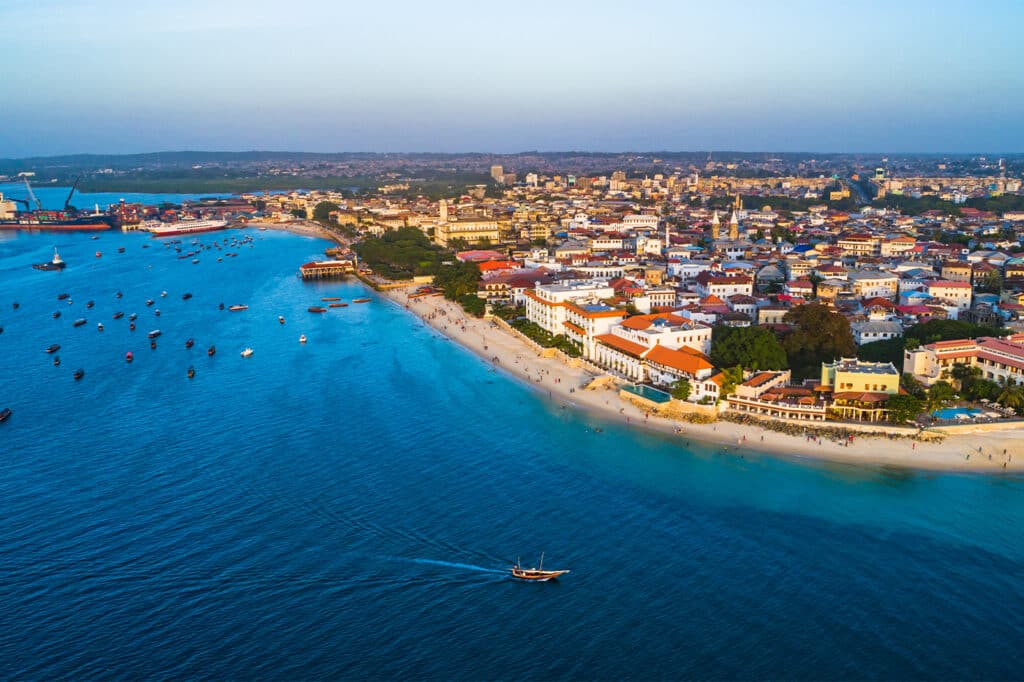
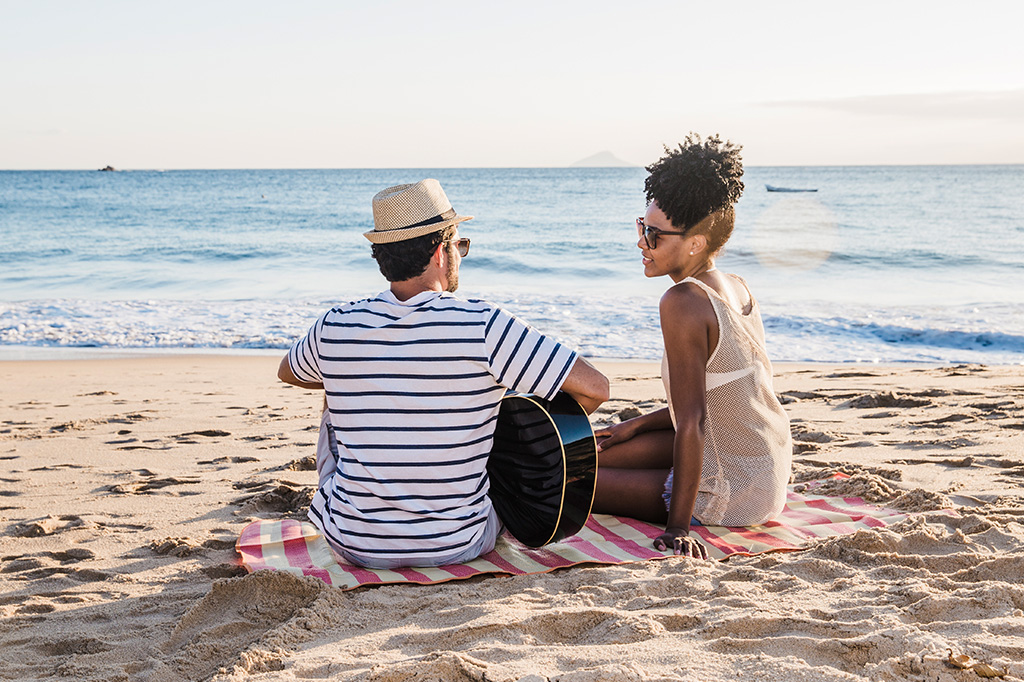
1. Zanzibar Island in June
The first winter month in the southern hemisphere, June marks the beginning of Zanzibar’s long dry season – distinguishing itself by being the driest and sunniest month Zanzibar is likely to experience all year. June carries with it high wind speeds, the best of the year for water sports.
Also, one of the most spectacular natural events in the world is just a boat ride away. From June to September, on Juani Island, south of Zanzibar near Mafia Island, thousands of sea turtle hatchlings engage in a wild dash from their nests to the open waters of the Indian Ocean!
2. Mafia Island in June
June sees the end of the rainy, wet season, and the first inklings of the long dry season that will take hold of mainland Tanzania right up until October. With eight hours of sunshine and a daily high of 30°C, your beach vacation to Mafia in June is sure to be a delight.
3. Pemba Island in June
As with the other islands and the mainland in general, June is the beginning of the long dry season in Tanzania. For Pemba, this means that the rains of late March, April, and May have dissipated and given way to long stretches of sunshine, warm winds, and delightfully clear waters.
Southern Tanzania Safari in June
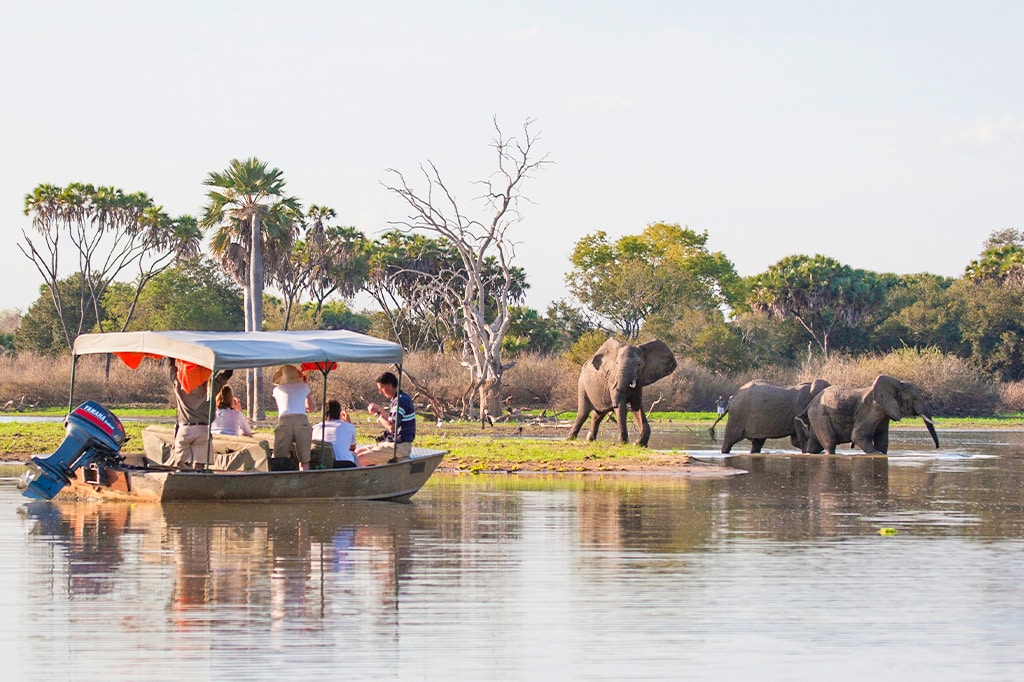

1. Game drives, wildlife, and birds in June
Southern Tanzania’s wildlife viewing is potentially at its peak in June. Due to the dry temperatures, clear skies, and the unobstructed landscape (apart from the occasional dust cloud), June allows for the best chance to see all of Tanzania’s most iconic animals in action.
As a result of the lack of vegetation and rain, animals tend to cluster more than they would in the wet season with food and water becoming rarer commodities. This means that there are certain areas that become ‘high-density’ wildlife areas like a strand of trees or a watering hole.
2. Ruaha National Park in June
June is truly when the dry season takes a hold of the landscape in Southern Tanzania. As the rains dissipate, the landscape becomes drier and monochrome, meaning animals become easier to spot. They also tend to congregate around main sources of water, meaning they are easier to locate as well.
3. Nyerere National Park in June
June is a fantastic time of year to visit Nyerere. April and May’s wetness has fully dried out and left Tanzania’s largest national park dry and cool. The animals that were once hidden behind colourful grass and leaves are now easy to spot as they come out of hiding to migrate towards water sources.
Chimpanzee trekking in June
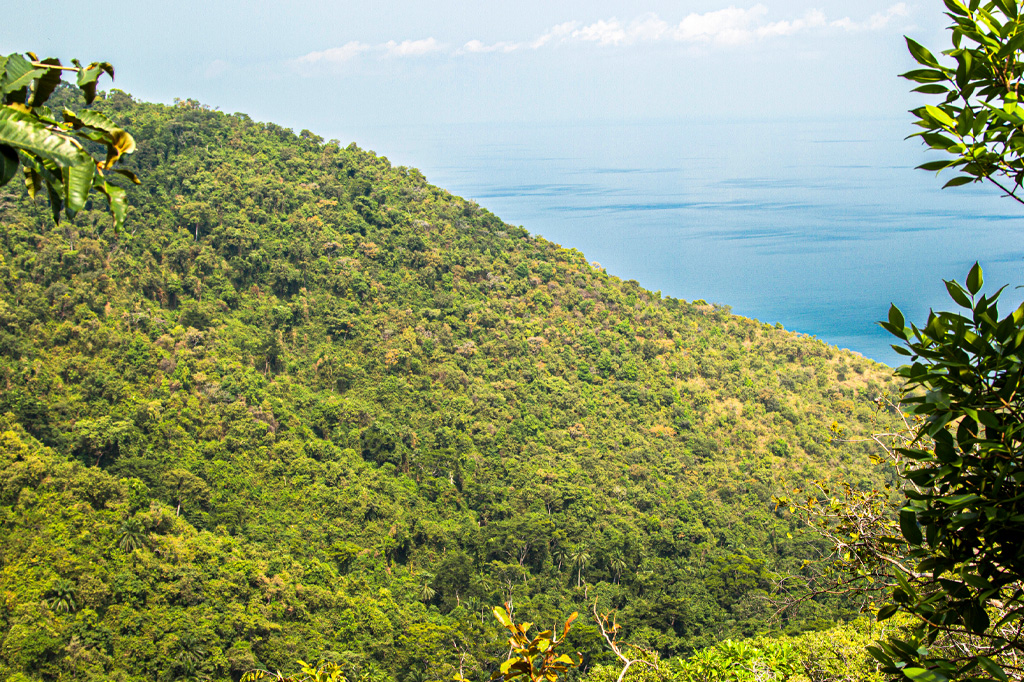
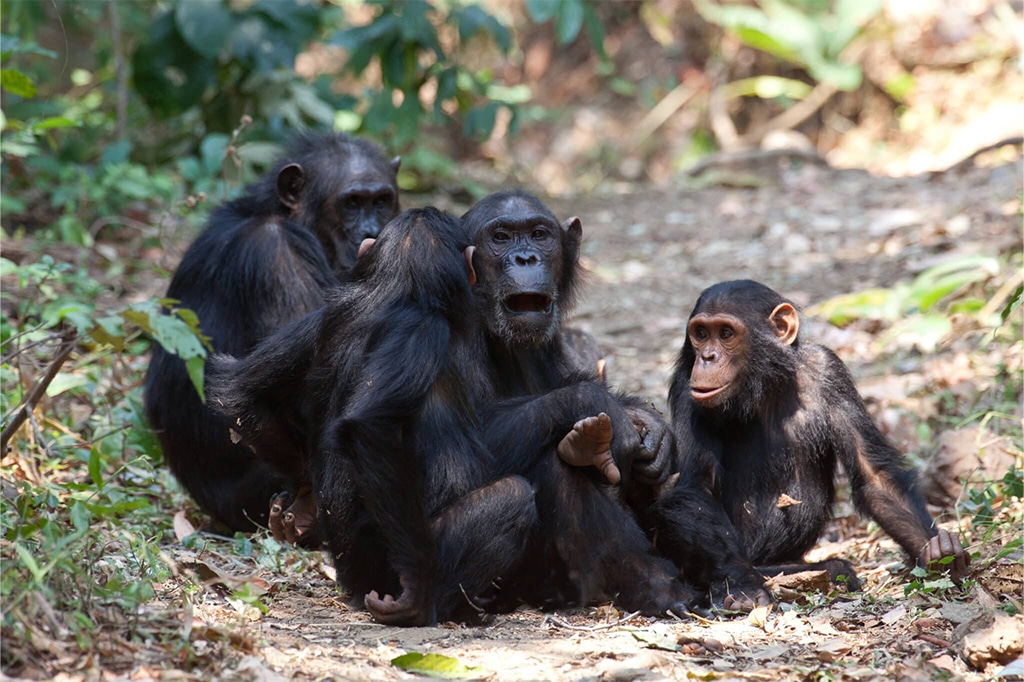
1. Mahale National Park in June
Even in the high or peak seasons, Mahale National Park is still relatively remote, meaning tourists are more likely to have the place to themselves. June is a great time to visit as it is not quite peak season, but the chimpanzees are slowly but surely migrating down the mountains for easier viewing!
2. Katavi National Park in June
Katavi’s oppressive heat and humidity has mostly dissipated by June, cooling down the large park and bringing in refreshingly cool breezes. The dry season has also come to Katavi in June, dispelling the more dense forest brush and allowing for much better conditions for animal sightings!
3. Gombe National Park in June
June is when the dry season really comes into effect – the plains and forests of Gombe now offer less foliage and the roads and paths have dried up fully, making movement easier. Gombe’s most famous animal residents are the chimpanzees and tracking them is easiest at this time of year.
Frequently Asked Questions About Tanzania in June
Is June a good time to visit Tanzania?
Yes, June is one of the best months to visit Tanzania. It marks the start of the long dry season, making it excellent for safaris. Wildlife becomes easier to spot as vegetation thins, and conditions are also ideal for climbing Kilimanjaro and visiting Zanzibar.
What is the weather like in Tanzania in June?
Tanzania in June is cool and dry, with daytime temperatures averaging 20°C to 26°C. Northern parks such as Serengeti and Ngorongoro have clear skies, while Zanzibar enjoys less humidity and comfortable beach conditions. Nights can be chilly in highland areas.
Can I see the Great Migration in June?
Yes, in June the Great Migration is typically in the Serengeti’s Western Corridor and Grumeti area. Large herds gather near riverbanks, and it’s possible to witness dramatic river crossings along with intense predator activity.
Is June a good time to climb Kilimanjaro?
June is an excellent month for climbing Kilimanjaro. The trails are dry, the weather is stable, and visibility is superb. Although nights are cold at higher altitudes, overall conditions are favorable, making June a popular time for summit attempts.
Can I visit Zanzibar in June?
Yes, June is a wonderful month to visit Zanzibar. The island transitions into its dry season, with sunny days, comfortable temperatures, and calmer seas. It’s an ideal time for relaxing on the beach, diving, snorkeling, or exploring cultural sites like Stone Town.
